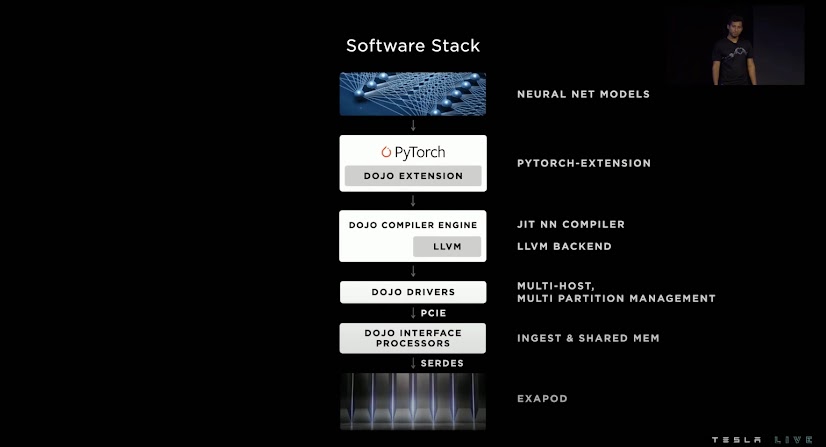Tesla has unveiled “Cybertruck on Mars” designs generated by its AI as part of a demonstration of its AI software stack running on its Dojo supercomputer.
One of the more interesting parts of the presentation was the progress made by Tesla’s Dojo team on its supercomputer.
While the headlines have focused mainly on the hardware developed by Tesla for its Dojo supercomputer, the company has also made some great advancements in software.
Rajiv Kurian, principal engineer at Tesla who focuses on hardware-software codesign for micro-architecture, explained in a presentation how Tesla is making the best of its Dojo supercomputer AI accelerator through software.
Kurian gave an example:
We expect most models to work out of the box. As an example, we took the recently released Stable Diffusion model and got it running on Dojo in minutes. Out of the box, the compiler was able to map in a model parallel manner in a 25 Dojo dies.
Stable Diffusion is a text-to-image deep learning model that is able to generate detailed images conditioned on text descriptions.
He released some pictures of “Cybertruck on Mars” generated by Stable Diffusion running on Tesla’s Dojo:
Regarding the results, Kurian aptly noted:
It looks like it still has ways to go before matching the Tesla Design Studio team.
There are some that indeed don’t make much sense, but some of the designs show some promises if they get cleaned up.
What do you think? Can this be used as a design tool for designers to get inspiration? Let us know what you think in the comment section below.
Subscribe to TD Program on Twitter for exclusive videos and subscribe to the podcast.








Social Plugin